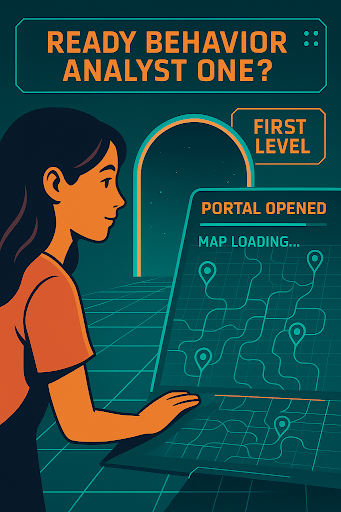AI and Behavior Analysis — Why It Matters
David J. Cox PhD MSB BCBA-D, Ryan L. O'Donnell MS BCBA

The portal has opened, the map is loading, and the first level of this AI-literacy quest begins now.
Welcome to the First Issue of the Ongoing Series
Project Chiron launched last week with a bold declaration: Behavior analysis is entering a new epoch, and artificial intelligence will play a major role in that transformation. This week, we move from orientation to action. Today’s issue sets the foundation for every future installment by asking a deceptively simple question: Why does AI matter for behavior analysts?
Why AI and Behavior Analysis Belong in the Same Conversation
Artificial intelligence is not just reshaping industries—it is actively reconstructing how human behavior is measured, understood, and modified. At its core, AI is a system of contingencies: a feedback engine tuned by reinforcement histories encoded as data. This makes it behaviorally relevant by default, not by exception.
Where AI touches behavior, it is our job to understand it.
But here’s the reality: as a field, we are behind. While education, healthcare, and organizational leadership scramble to adapt to AI’s encroachment, applied behavior analysis (ABA) remains largely silent, voicing premature optimism or skeptical dismissal. Both are unsafe. What is needed is fluency. What is needed is literacy.
Whether we choose to engage or not, AI is:
-
Present in the software used to monitor clients
-
Embedded in the clinical decision-making workflows we adopt
-
Driving the expectations of payers, schools, and regulators
-
Shaping the tools that behavior analysts rely on for training, documentation, and analysis
AI is no longer a future concern. It is a present influence with expanding power.
What Literacy Means
AI literacy isn’t just knowing a few buzzwords. It’s the behavioral equivalent of knowing how to read reinforcement schedules. It allows you to detect what's shaping the outcome, what assumptions are baked in, and how you should modify contingencies to improve performance.
In a practical sense, AI literacy for behavior analysts means:
-
Understanding the difference between model accuracy and clinical validity
-
Knowing when “black box” outputs can or cannot ethically inform programming
-
Recognizing how bias enters a dataset and how that bias gets amplified through prediction
-
Identifying when vendors or developers are over-promising what an AI system can deliver, and the tough questions to ask
Crucially, AI literacy also means you can communicate these concepts to others—supervisees, parents, boards of education, insurance carriers—in plain language and with ethical clarity.
AI literacy is not extra. It is essential.
AI Literacy is an Ethical Mandate, Not Just a Professional Advantage
The BACB Ethics Code (2022) repeatedly calls on practitioners to engage with competence, accountability, and transparency:
-
Code 1.01: Rely on scientific knowledge
-
Code 2.02: Deliver effective treatment
-
Code 2.12: Evaluate and document technology-based services
-
Code 6.01: Affirm principles of dignity and autonomy
If AI is involved in decision-making, reporting, or intervention design—and we lack the skill to evaluate it—we are already in breach of the Code. Passive ignorance in the face of powerful tools is not ethical neutrality. It is abdication.
This doesn’t mean we all become programmers. It means we become literate enough to make informed judgments, ask the right questions, and demand evidence when claims are made.
To fail in this is to let others—often with no behavioral training or care about the long-term future of our field—define what counts as “effective,” “data-driven,” or “client-centered.”
A Brief History of Missed Opportunities
Throughout the history of science and technology, behavior analysis has had moments where it stood at the edge of major transformation, and hesitated to get involved:
Chiron: The AI Literacy Series for ABA Professionals
A weekly newsletter exploring how ABA professionals can develop essential AI literacy skills to ensure ethical and effective practice in a rapidly changing field.

